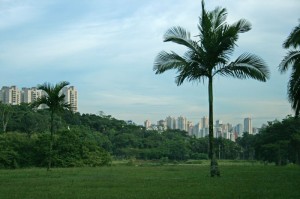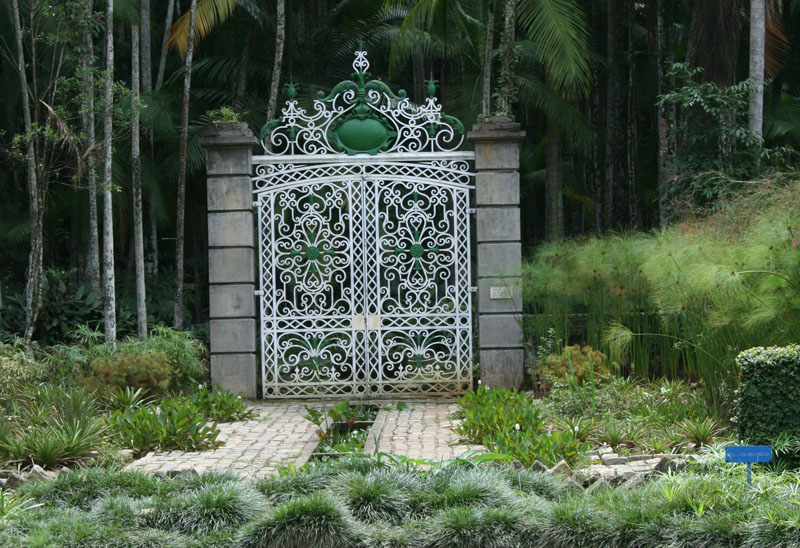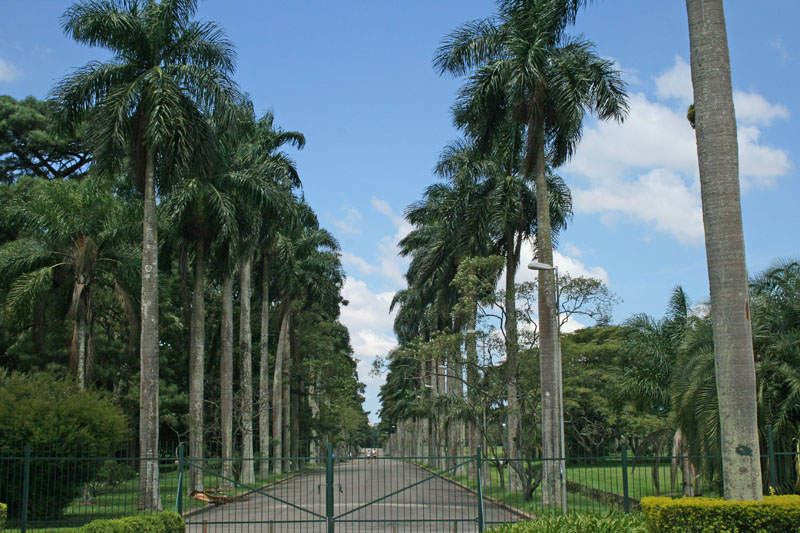Coolest Spot in São Paulo
Posted in Science on March 28 2013, by Scott Mori
Scott A. Mori is the Nathaniel Lord Britton Curator of Botany at the The New York Botanical Garden. His research interests are the ecology, classification, and conservation of tropical rain forest trees. His most recent book is Tropical Plant Collecting: From the Field to the Internet.

When I was in Brazil to attend a meeting on Amazonian Biodiversity in São Paulo I also had the opportunity to visit one of The New York Botanical Garden‘s sister institutions, the Jardim Botânico de São Paulo. Just like NYBG, the São Paulo garden is a refuge from the traffic, heat, and noise of life within one of the world’s megacities. São Paulo is the eighth largest city in the world with 11 million inhabitants, and the city’s 588 square miles of paved surfaces can make it feel much hotter than the reported temperature. During my visit, temperatures ranged from a pleasant 68º to a high of 90º. In the open areas of the garden it was hot enough to dampen my t-shirt as I headed for a remnant patch of Atlantic coastal forest, but upon entering the forest the temperature dropped significantly and I cooled off. I was then able to begin enjoying the plants surrounding me.
The Garden was established in 1920 under the directorship of Frederico Carlos Hoehne. The area was originally the location of the city’s waterworks and the original gate built in 1894 is preserved on the Garden’s grounds. Today the Garden consists of 85 acres of formal gardens and an arboretum dedicated to growing trees native to São Paulo and Brazil, in addition to the 1,210 acres of remnant forest mentioned above.
The temperature drop led me to think about how converting forests to agricultural fields, buildings, and roads has modified the climate–and everyone I talked to in São Paulo told me that the city is experiencing stronger and more frequent storms than occurred in the past. In short, this Garden ameliorates flooding in a local area, protects animals and migratory birds, captures carbon dioxide, keeps temperatures lower, and provides a place for people to relax, enjoy the diversity of plants and animals, and learn about ecosystem services and how they are essential to the sustainability of life on earth.

The São Paulo garden is also home to the Instituto de Botânica of the state of São Paulo, an organization dedicated to the study of the algae, mosses and their relatives, ferns and their allies, and flowering plants of the state of São Paulo and the country of Brazil. Only the pines and their relatives are not represented at the institute by a scientist dedicated to their study because they are not represented in Brazil by many native species. There is a very strong scientific relationship between the botanists of São Paulo and The New York Botanical Garden because of the frequent visits our scientists make to Brazil and the many Brazilian botanists that come to NYBG to study our outstanding collections of Brazilian plants.
The mission of the Jardim Botânico de São Paulo is quite similar to that of the NYBG, to conserve the biodiversity in the state by promoting the protection of the plants and fungi found there as well as in the rest of Brazil, a mission vital to the animals and microorganisms depending on them for the habitats they live in. Botanical gardens throughout the world share this mission by developing strong programs in horticulture, science, and education. But, unfortunately, they cannot succeed without the support of politicians and the general public, especially with a world citizenship that often does not understand the role that ecosystem services play in maintaining a healthy planet.

In addition to my trip to the botanical garden, I also took advantage of my visit by working in the herbaria of the Department of Botany of the University of São Paulo and at the Instituto de Botânica. In these two herbaria, I studied specimens of the Brazil nut family (Lecythidaceae is the scientific name of the family) as part of my goal to document the diversity of this family throughout Central and South America and presented a lecture on the pollination and dispersal biology of the Brazil nut family at the University.

